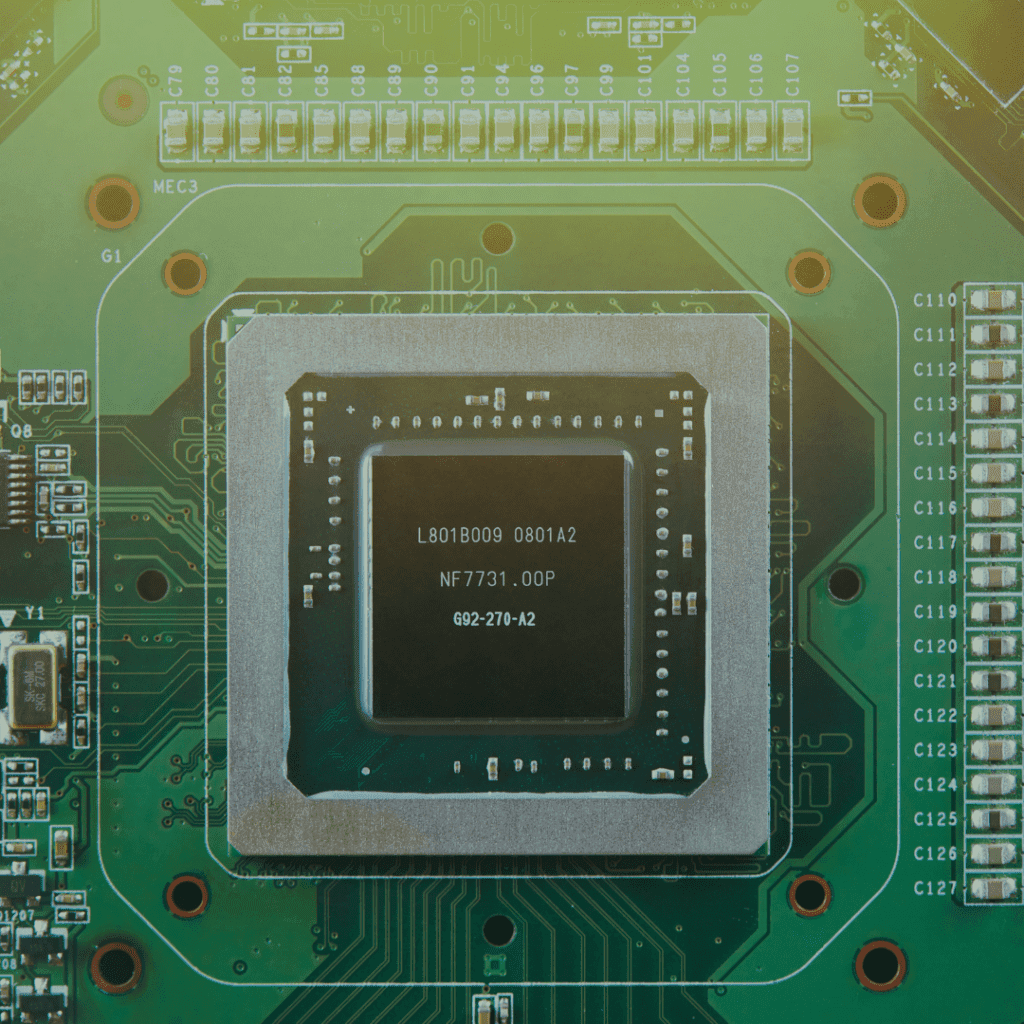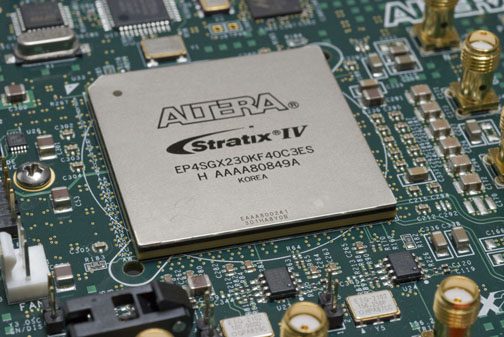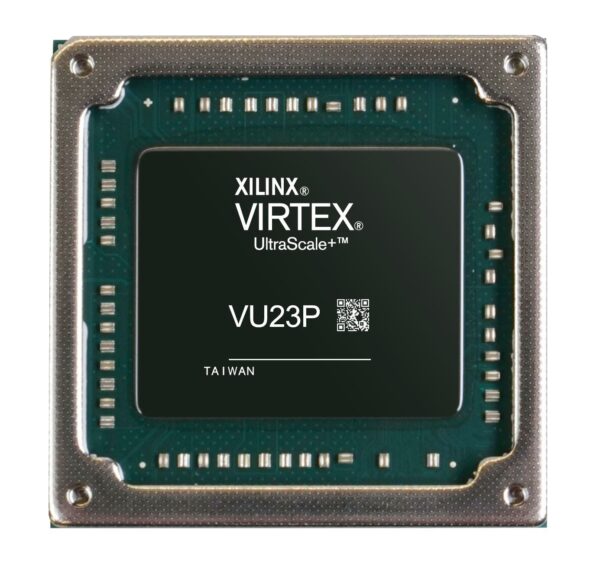FPGAs

More from the Category
In the realm of modern computing, the demands for higher performance, flexibility, and energy efficiency have pushed conventional processors to their limits. This has paved the way for groundbreaking technologies, and one such innovation is the Field-Programmable Gate Array (FPGA). Unlike traditional CPUs and GPUs, FPGAs have gained traction for their unparalleled adaptability and potential to revolutionize various industries.
What is an FPGA?
A Field-Programmable Gate Array, commonly referred to as FPGA, is a programmable integrated circuit designed to be configured and reconfigured by users to perform specific tasks. Unlike Application-Specfic Integrated Circuits (ASICs), which are permanently designed for specific functions during fabrication, FPGAs provide a unique level of customization through hardware programming.

FPGA Architecture
The architecture of an FPGA is based on a collection of configurable logic blocks, interconnects, and input/output blocks (IOBs). These elements collaborate to create a complex network of digital circuits.
The core of an FPGA’s architecture consists of an array of an array of configurable logic blocks (CLBs). Each CLB contains a group of Look-Up Tables (LUTs) and Flip-Flops that can be programmed to implement various Boolean functions and store data. The LUTs act as small memory units and can represent any combinational logic function with a limited number of inputs.
The Flip-Flops, on the other hand, are used to store sequential logic, making them essential for building registers and state machines. Together, these CLBs form the logic fabric of the FPGA, providing the foundation for its programmable capabilities.
The interconnects form a mesh-like structure, connecting the various CLBs, IOBs, and other components. These interconnects allow data to flow between different parts of the FPGA, enabling the creation of complex and interconnected circuits.
The input/out blocks (IOBs) are used to interface the FPGA with external devices. They act as bridges between the internal logic and the external world, allowing data to be received and sent to the FPGA.
The configuration memory, often implemented as static RAM (SRAM0, holds the user-defined logic and interconnected configurations. During the configuration process, the SRAM cells are programmed with the desired configuration data, effectively defining the behavior of the FPGA.
Programming an FPGA
The programming process of an FPGA involves creating a Hardware Description Language (HDL) code that defines the desired functionality. HDLs, such as VHDL (VHSIC Hardware Description Language) and Verilog, are common languages used for this purpose. HDL code serves as a human-readable representation of the desired circuit behavior.
After designing and simulating the HDL code, the next step is synthesis. During synthesis, the HDL code transformed into a netlist of logical and physical elements of the sign, along with their connection.
The netlist is then used to generate a configuration bitstream. The bitstream is a binary file containing the configuration data for the FPGA. This bitstream is loaded into F∏˝A’s configuration memory, effectively programming the device and defining the desired logic and interconnect configurations.
The ability to reconfigure FPGAs with new bitstreams allows users to modify the Fπ©å’s functionality as needed, making them highly flexible and adaptable to changing requirements.

Xilinx Virtex UltraScale+ FPGA. (Image source: AMD)
Applications of FPGAs
Digital Signal Processing (DSP): They are extensively used in DSP applications due to their parallel processing capabilities. They can perform tasks such as audio and image processing, speech recognition, and software-defined radio more efficiently than conventional processors—the ability to implement custom hardware accelerators for specific algorithms FPGAs to achieve high-performance gains in DSP tasks.
High-Performance Computing (HPC): FPGAs are increasingly integrated into HPC systems to accelerate specific algorithms and improve overall performance. Their parallel processing capabilities, combined with the ability to tailor hardware to the application, make them well-suited for certain computational workloads.
Machine Learning and AI: FPGAs are emerging as attractive alternatives to GPUs for certain AI applications, particularly in edge computing and real-time inference tasks. FPGAs can be customized to accelerate specific neural network operations, leading to improved power efficiency and lower latency.
Networking: They can also find applications in networking hardware, enabling the implementation of high-speed packet processing and network security functions. Their ability to process data in parallel allows for efficient handling of network traffic, making them suitable for routers, switches, and network appliances.
Embedded Systems: Due to their reconfigurability, FPGAs are ideal for prototyping and testing custom logic in embedded systems before committing to ASIC production. They are monitoring and signal-processing tasks.
Cryptographic Systems: FPGAs are used in cryptographic systems in cryptographic systems to implement encryption and decryption algorithms efficiently. The ability to customize the hardware for specific cryptographic algorithms enhances security and performance.
Advantages of FPGAs
Flexibility: The ability to reconfigure FPGAs enables rapid prototyping, interactive design changes, and adaptability to changing requirements. This flexibility is particularly beneficial in research, development, and emerging technologies where requirements may evolve rapidly.
Parallel Processing: FPGAs inherently excel at parallel processing, making them highly efficient for data-intensive applications. Tasks that can be parallelized can see significant performance improvements when implemented on FPGAs.
Power Efficiency: For certain tasks, FPGAs can outperform traditional CPUs and GPUs while consuming significantly less power. This power efficiency is especially critical in applications where energy consumption is a major concern.
Customization: FPGAs offer tailored solutions for specific applications, allowing designers to optimize for performance and area. By designing custom hardware for custom hardware for tasks, FPGAs can achieve higher performance and energy compared to general-purpose processors.
Challenges and Limitations
Complex Design Process: The development requires expertise in hard description languages and digital logic design, making the learning the learning curve steeper for some developers. The design process can be more involved and time-consuming compared to software development.
Cost: FPGAs can be more expensive than off-the-shelf processors, especially for high-performance models. The higher cost may limit their adoption in cost-sensitive consumer applications.
Limited Resources: The resources available within an FPGA (e.g., LUTs, Flip-Flops) may constrain the complexity of the designs that can be implemented. Large and complex designs may require higher-end FPGAs, increasing cost and power consumption.
Wrap Up
Field-Programmable Gate Arrays have emerged as a groundbreaking technology that pushes the boundaries of computing capabilities. Their unique blend of adaptability, performance, and energy efficiency has opened the door to exciting applications in various domains. As advancements continue, FPGAs will undoubtedly play a crucial role in shaping the future of computing and ushering in a new era of innovation. Their ability to be customized for specific tasks and their inhering in an era of innovation. Their ability to be customized for specific tasks and their inherent parallel processing capabilities position them as versatile heroes in the ever-evolving landscape of modern computing.
Looking ahead, ongoing research and development efforts are expected to address some of the challenges assoiated with FPGÅs. Manufacturers are continuously striving to enchance the ease of use and accessibility of these devices, making them more approachable for broader range of developers and industries. Additionally, innovations in FPGA architectures and design tools may lead to more cost-effective solutions, broadening their adoption in consumer electronics and other price -sensitive markets. As FPGAs become increasingly prevalent in cutting-edge technologies and niche applications alike, they stand posied to shape the landscape of computing for years to come.
Power Your Next Innovation with Microchip USA
Ready to harness the flexibility and performance of cutting-edge FPGAs? Partner with Microchip USA to source the latest FPGA solutions and complementary components that bring your designs to life. Contact us today!









